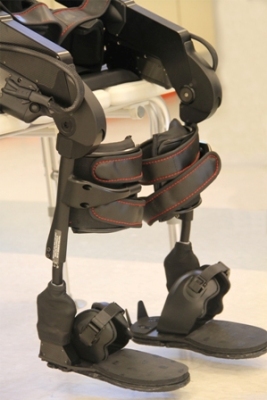Mar 3 2012
Kessler Foundation has partnered with Ekso Bionics to test the potential of a commercial version of robotic exoskeleton, Ekso.
 Ekso Commercial Robotic Exoskeleton
Ekso Commercial Robotic Exoskeleton
The exoskeleton is a battery-powered, wearable device that is designed to improve the life of people suffering from disabilities.
Ekso helps people with lower-extremity weaknesses and have the capability to use wheelchairs to stand up and walk. These weaknesses may have occurred due to spinal cord injuries such as paraplegia or tetraplegia. The exoskeleton is being distributed among Ekso’s 10 charter partners. The Kessler Foundation is one among the charter partners to test the exoskeleton.
Back in October 2011, researchers at Kessler Foundation tested an Ekso prototype on participants suffering from spinal cord injuries. One of the participants had tetraplegia, while the other five had paraplegia. A video of the participants walking with the Ekso were recorded.
Meet the Ekso test pilots at Kessler Foundation
The lead investigator for the research at Kessler Foundation, Gail Forrest stated that the team will study the effect of an injured person’s standing and walking on total health. The researchers are concentrating on bowel, bladder, lung and cardiac function, mood, muscle strength, bone density and blood circulation. Data collected from preliminary research shows promise for exoskeleton. Protocols and potential beneficiaries are to be identified. The evidence base established from the study will aid in gaining support for the use of the Ekso exoskeleton as a rehabilitation device.
The Kessler Institute for Rehabilitation and the Kessler Foundation are partnering in this study. An Ekso exoskeleton for home use is expected to hit the market in 2013.